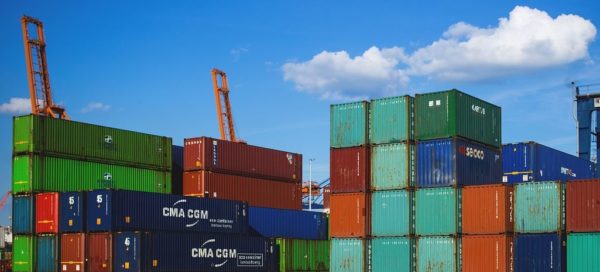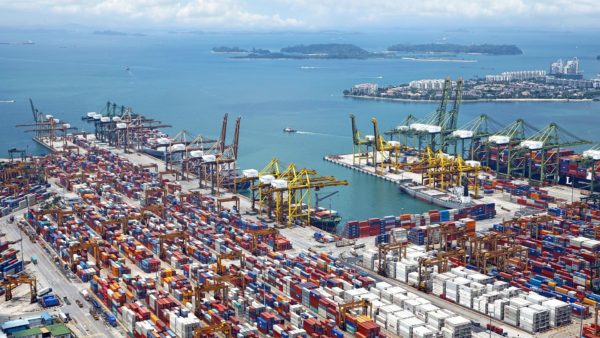The issue of trade and tariffs has likely been at the top of everyone’s mind over the last few weeks. We’ve seen two formal petitions filed to extend the Section 201 tariffs, detainment of modules by United States Customs and Border Protection (CBP), and the filing of an Antidumping and Countervailing Duties (AD/CVD) circumvention case.
Whether you’re a local residential installer; a utility-scale developer; an engineering, procurement, and construction (EPC) firm; or you’re buying a solar module in the foreseeable future, all of these events will likely impact you directly or indirectly. It’s crucial to comprehend and track what’s going on.

It’s important to understand that although this article is providing a brief explanation of each major trade action, these are highly complex and technical matters that deserve consultation with professional counsel.
Section 201 tariff extension
At the beginning of August, two manufacturers, Suniva and Auxin Solar, filed a petition asking the International Trade Commission (ITC) to investigate extending the Section 201 (s201) tariffs for another four years. Three days later a second petition was filed by Hanwha Q Cells, LG Electronics, and Mission Solar, which also included an ask that the Tariff Rate Quota (TRQ) be increased to 5 GW (from the current 2.5 GW).
The s201 tariff is imposed on all solar modules imported into the U.S. that don’t meet exemption status as published in the Federal Register. The current s201 tariff is 18% and, if the tariff is not extended, would drop to 0% in February 2022.
As per trade law, if the ITC grants an extension of the s201 tariff it will last no longer than four years and cannot be extended again. The rate must also drop annually.
Timing: The ITC is currently collecting data to investigate the asks by the manufacturers, and a hearing will be held this fall with a report and recommendation delivered to the president by the ITC in December 2021. Results should be known in advance of the expiration of the first s201 tariff.

Image: Pixabay
Key takeaway: Module prices will not go up as a result of the s201 tariffs being extended, as the tariff rates cannot increase from their current levels. However, they obviously won’t drop if the tariff is extended. Larger developers and EPCs that are forward-procuring modules can likely work with manufacturers to negotiate price adjustment clauses based on the outcome of the tariff. For residential and smaller buyers of modules, the suggestion would be to carry forward module pricing provided to you; if the tariff rate drops substantially or is not renewed then you can treat this new module price as upside.
Module detainment
At the end of June, CBP announced that imports containing silica from a Chinese company called Hoshine would be banned due to concerns of forced labor. By industry analyst estimates, Hoshine provides roughly 60% of the world’s metallurgical grade silicon (MG-Si) used in the solar industry. MG-Si is at the very top of the upstream solar sector, providing the feedstock material used in the polysilicon refining process.

Image: Pixabay
Since the announcement, the industry has been feverishly working toward traceability and providing documentation and assurances that their supply chain is free of material from Hoshine. In August, reports started to circulate that CBP was detaining product that they suspected contained material from Hoshine and subject to the Withhold Release Order (WRO).
Next steps: According to trade experts, CBP enforcement of the WRO will evolve over time. So a module that was successfully imported yesterday might be stopped tomorrow. Although the quantity of modules detained seems to be relatively targeted in scope and scale at first, it has sent shock waves through the entire industry as buyers scramble to find replacement modules and as concerns grow about who might be next in an enforcement action.
It is also widely expected that this fall the Forced Labor Prevention Act will be signed into law. It would effectively ban any import containing material from the Xinjiang (XUAR) region of western China. This would broaden the scope from Hoshine to several other MG-Si suppliers as well as polysilicon capacity that exists in the region.
Key Takeaway: The quarantining and detention of solar modules by CBP is having significant near-term implications throughout the industry. It’s important to continue to monitor the situation and work with vendors that have perceived lower risk of CBP action by reviewing Supplier Codes of Conduct, upstream supply chains through third-party traceability audits, and those without direct ties or facilities in the XUAR region.
AD/CVD circumvention case
In mid-August a group of companies under the banner of “American Solar Manufacturers Against Chinese Circumvention” filed three petitions asking the U.S. Department of Commerce to investigate whether imports from named companies exporting from Malaysia, Thailand, and Vietnam are circumventing the established AD/CVD and whether AD/CVD rates should apply to imports from those companies and countries (which represent approximately 80% of imports into the U.S. from those countries). If you’ve been in the solar industry for a while, you’ll probably remember the AD/CVD cases originated in 2012. The rates are reviewed periodically and currently range from roughly 90% to almost 240%; they are significant.

Next steps: The market is digesting the implications and merits of this case. Commerce has 45 days to initiate an investigation based on the petitions and can issue a preliminary determination at that time, which may trigger the collection of AD/CVD tariffs. Final determinations can be expected next summer (300 days after filing). It’s important to pay close attention to the preliminary determinations, expected at the beginning of October.
Key Takeaway: While this filing was missed by many in the industry due to the noise related to the detainment of modules by customs, it is worth paying close attention to. Supply chains can and will be altered, but moving entire factories will take time, significant capital, and run the risk of further trade action.
For buyers of solar modules, the list of companies involved in the AD/CVD circumvention case are known and theoretically others aren’t involved.
Domestic supply chain
Everyone has deep-seated and passionate views about these trade actions and cases on both sides. For nearly a decade the solar industry has dealt with tariffs and trade actions, and we’ll undoubtedly be dealing with them for the foreseeable future.
As an industry the best way to ensure a constant supply of high-quality, cost-efficient products is to invest in a domestic supply chain. In June, Senator Jon Ossoff (D-GA) introduced the Solar Energy Manufacturing for America Act (SEMA), which would provide a tax credit for domestically produced solar products and encourages investment in full value-chain manufacturing.
This is legislation that every solar industry professional should get behind. Today, downstream jobs are at risk and at the mercy of a foreign supply chain.
Let’s invest in a domestic supply chain to protect every U.S. solar job and create hundreds of thousands more.
Brian Lynch is director of solar sales at LG Electronics USA Inc. and a frequent contributor to pv magazine.
The views and opinions expressed in this article are the author’s own, and do not necessarily reflect those held by pv magazine.
This content is protected by copyright and may not be reused. If you want to cooperate with us and would like to reuse some of our content, please contact: editors@pv-magazine.com.








By submitting this form you agree to pv magazine using your data for the purposes of publishing your comment.
Your personal data will only be disclosed or otherwise transmitted to third parties for the purposes of spam filtering or if this is necessary for technical maintenance of the website. Any other transfer to third parties will not take place unless this is justified on the basis of applicable data protection regulations or if pv magazine is legally obliged to do so.
You may revoke this consent at any time with effect for the future, in which case your personal data will be deleted immediately. Otherwise, your data will be deleted if pv magazine has processed your request or the purpose of data storage is fulfilled.
Further information on data privacy can be found in our Data Protection Policy.